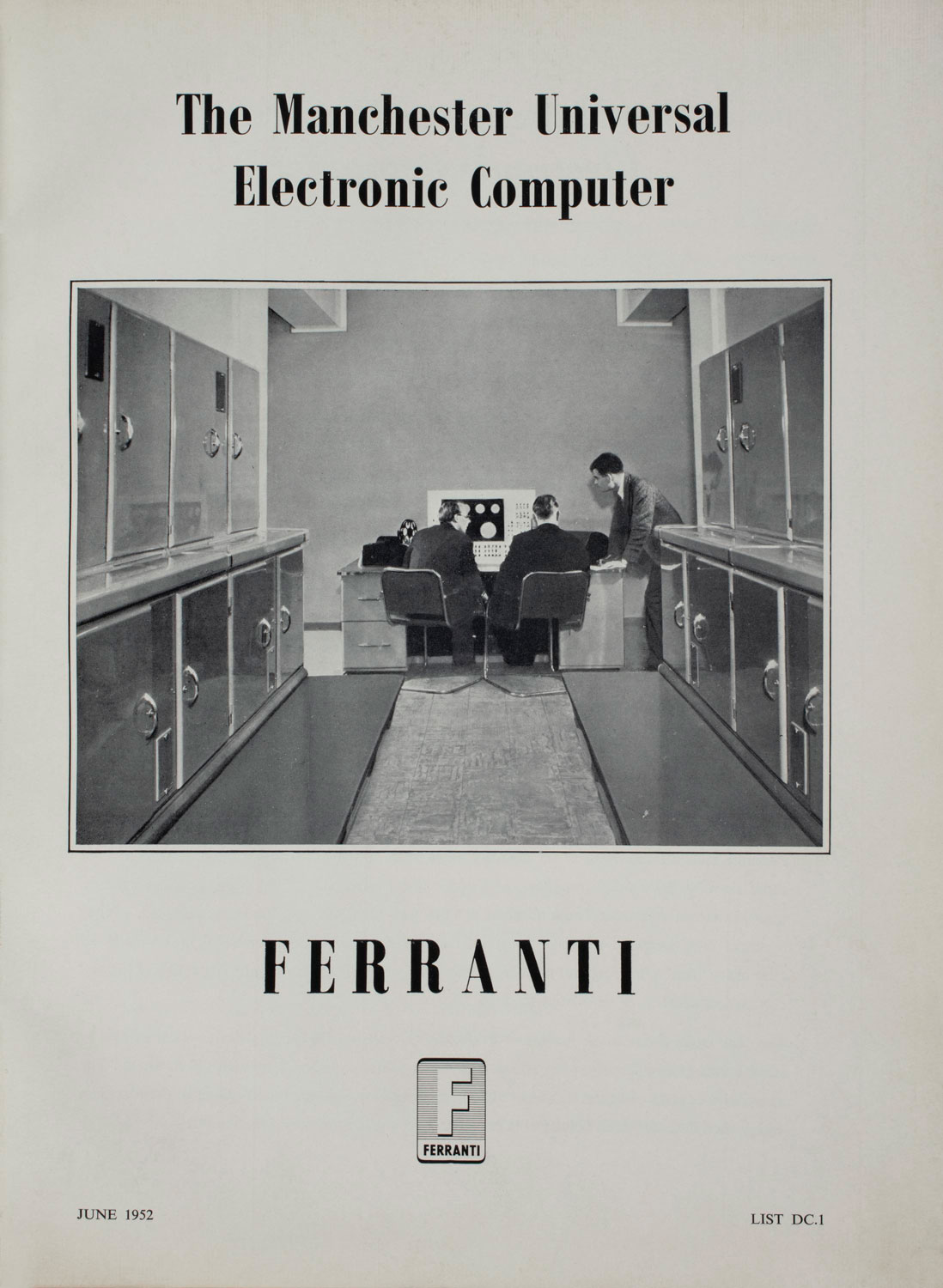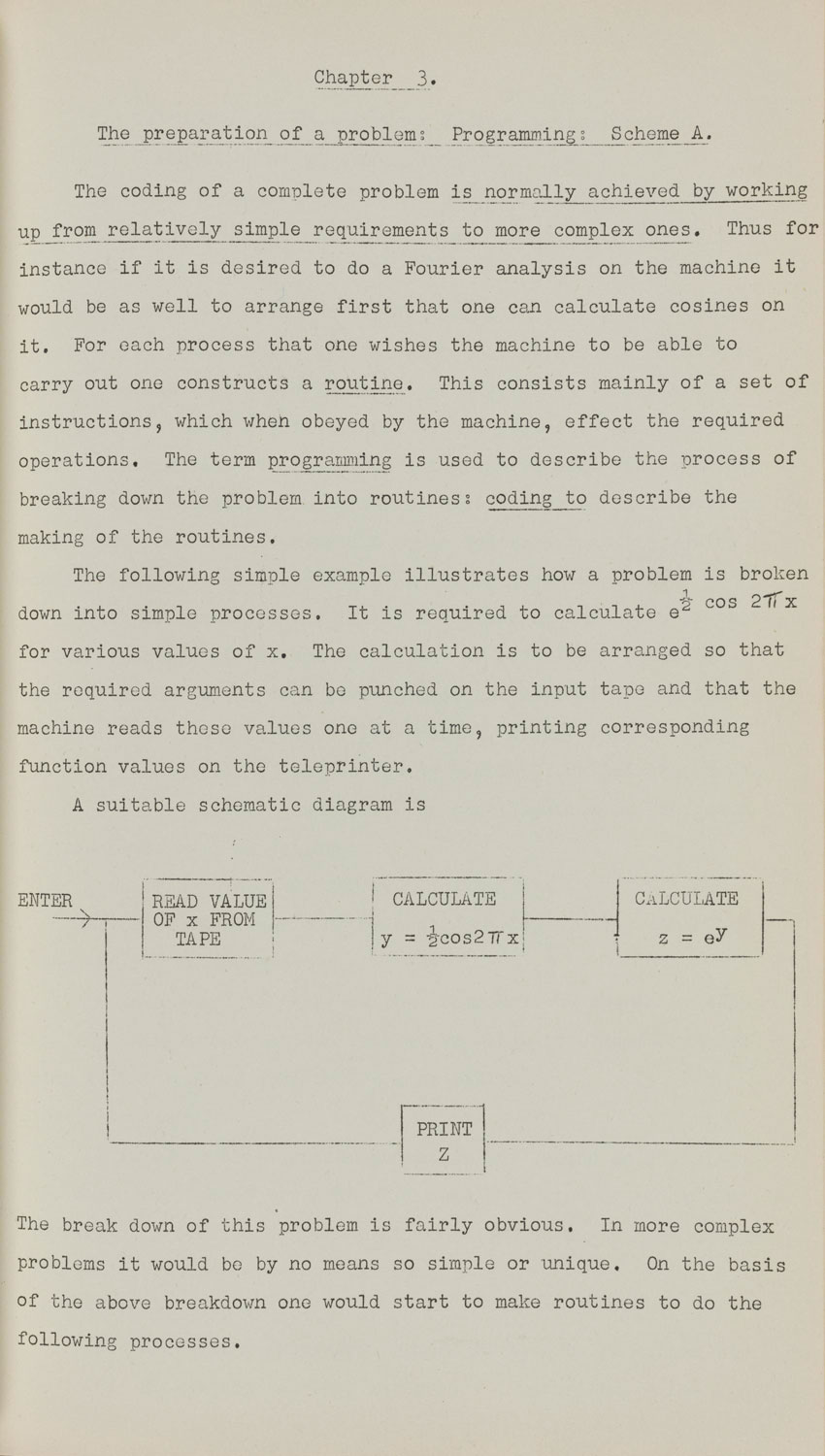Please note: Top Secret: From ciphers to cyber security ended on 31 August 2021. To find out what exhibitions and activities are open today, visit our What’s On section.
109 years ago, on 23 June 1912, a man was born who would profoundly shape our modern world. His name was Alan Turing.
Turing laid the foundations for electronic computing and artificial intelligence, helped shorten the Second World War through his developments in codebreaking and made important discoveries about mathematical patterns in nature. He did some of his most innovative thinking here in Manchester and we were proud to display some of the objects from our collection that relate to Turing in our special exhibition, Top Secret: From ciphers to cyber security (19 May – 31 August 2021).
From an early age, Turing displayed a remarkable talent for mathematics and, at the University of Cambridge in 1936, he wrote a paper ‘On Computable Numbers, with an Application to the Entscheidungsproblem’. In this paper he imagined a machine that could read instructions stored in its memory to carry out any computable task. The document laid the foundations for the computers that have transformed our lives.
Turing’s mathematical ability made him a prime candidate to help with deciphering German military messages at the Government Code and Cipher School (later GCHQ) at Bletchley Park during the Second World War. At Bletchley Park, he worked with fellow code-breaker Gordon Welchman to design powerful codebreaking machines called bombes. They were based on the pre-war work of Polish codebreakers and automated parts of the long and laborious decryption process.
The Germans used coding machines called Enigmas to send coded commands to their forces. The bombe machines could check thousands of Enigma settings in minutes and operated around the clock, deciphering up to two messages a minute. By the end of the war, hundreds of bombe machines were being used across Bletchley Park, at British outstations and by Britain’s allies in the United States.
Turing also led the team battling to decode German naval Enigma messages. Their work revealed information about German submarine positions, allowing Allied ships to dodge their attacks. An Enigma and a blueprint of a bombe machine and a rotor from one, used to check the Enigma settings produced by the bombe machines, were on display in the Bletchley Park section of Top Secret.
After the war, Turing was based at the National Physical Laboratory where he designed the Automatic Computing Engine, or ACE. When the test machine ran in 1950, it was the fastest computer in existence. However, in 1948, Turing had already moved to join Manchester University’s Computing Machine Laboratory, which had recently built and successfully run the world’s first stored programme computer, the Small Scale Experimental Machine (also known as Baby), of which we have a replica in our Revolution Manchester gallery.
Manchester was a major centre of pioneering work in computing and the University’s department had moved straight on to developing Baby into the Manchester Mark 1. Working with local engineering company Ferranti, the team then continued to develop the Manchester Mark 1 into the Ferranti Mark 1, the world’s first commercially available computer.

© The Board of Trustees of the Science Museum
Turing was responsible for developing programming for the Ferranti Mark 1, helping users make the most of the new technology. A display was added to the Top Secret exhibition’s run in Manchester to show parts of a Ferranti Mark 1 computer and a handbook with detailed instructions about how to program it. Alan Turing authored the first version of this manual. The second edition also contains information written by him.

© The Board of Trustees of the Science Museum
In 1951 an inaugural computing conference was held at Manchester University to celebrate the operation of the Mark 1. The conference was attended by a ‘who’s who’ of computing pioneers, including former Bletchley Park staff such as Turing and Max Newman.
Turing harnessed this new computing power for his own research into the mysteries of growth in biology. Using the computer, he investigated processes including pattern formation in animals and the development of embryos. He became fascinated by mathematical patterns in nature and developed a theory that the seeds in a sunflower head followed the Fibonacci sequence, where each digit is the sum of the two before.
In 2012, people worldwide grew sunflowers to investigate this theory. The data gathered by the project backed up Turing’s findings and raised new questions. Researchers kept one sunflower head because, unusually, it does not have a Fibonacci structure. In 2021, we added this sunflower to the Science and Industry Museum’s collection to demonstrate the breadth of areas in which Turing’s work in Manchester has impacted on our understanding of the world.

© The Board of Trustees of the Science Museum
Turing continued to have cordial personal and professional relationships with his former Bletchley Park and GCHQ colleagues after the war. The University of Manchester kindly lent the Science and Industry Museum letters sent between Turing and Eric Jones, director of GCHQ, in 1952, which were also on display in the exhibition.
In 1952, however, Turing’s life changed when he was convicted for having a sexual relationship with a man. To avoid prison, Turing accepted ‘treatment’ with female hormones. At this time, homosexuals had been made ineligible for security clearance and his consultancy work with GCHQ had to end. Two years later, shortly before his 42nd birthday, he was found dead at home. The full circumstances surrounding his death are unclear, but the official verdict was suicide. How much more this remarkable man could have contributed to knowledge and society we will never know.
In 2013, after a long campaign, Turing was pardoned and the government acknowledged the discriminatory and unjust treatment he received under the laws of the time. We are very pleased that material from the campaign for Turing’s pardon will be added to the Science and Industry Museum’s collection soon, helping us to tell the whole story about Turing as an individual as well as a mathematician, computing pioneer and codebreaker.